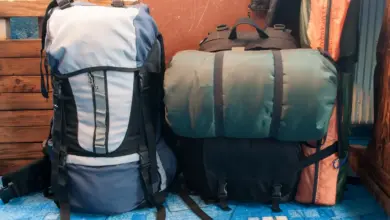Difference Between Sled and Toboggan
Difference Between Sled and Toboggan
Sleds and toboggans, commonly thought of as recreational toys, were originally for hauling loads across winter landscapes. For thousands of years, sleds have been hauling wood, hides, game, and gear. Pulling a sled may seem like a lot of work, but it can be much easier and safer than hauling heavy gear in a pack.
The light and fast philosophy of summer hiking might not be so practical when it comes to winter, and it may make sense to haul your gear in a sled or toboggan. Some hikers prefer to adjust their summer gear to fit winter, but if you want to set up base camp or bring extra food and equipment, a sled may be a good choice. With a sled, you can carry your weight in food and equipment.
For clarity, the term “sled” is a broader umbrella term used to generalize toboggans, pulks, and ski sleds.
Toboggans
Toboggans are the traditional sleds. They are long, typically 8 – 12 feet in length with a width of 16 inches. Their length makes them less likely to tip and their width makes them easy to pull through the snow, especially on flat terrain. Because of their short width, they can be pulled through your snowshoe trail. The wider the toboggan, the harder it is to pull, while the narrower the toboggan, the easier it is to pull. However, narrower toboggans must be longer to resist tipping. Toboggans also have a front curve which allows the toboggan to plow through any deep drifts it may encounter.
You may also like How to Pick the Right Snowshoes
Pulks
Pulks are sturdy sleds with sides. Some pulks are shorter and wider than toboggans. One advantage pulks have over toboggans is that pulks can turn much sharper. If you need to quickly maneuver around rocks or trees, doing so in a pulk will be much easier.
Pulks also have sides that keep loads inside offer some protection and keep snow and slush out. A sled depth of 5-7 is important, and anything more than that is only needed if you have loose items or are going over rough terrain. Bungies can be fastened to the pulk walks to help secure loads.
All sleds have some type of runners on the bottom that help keep the sled track straight. These runners also give the sled some rigidity. Some other elements that help keep the sled on track are skegs, fins, and long-shaped ridges on the bottom of the sled. These elements will reduce the chances of the sled tipping when on the side of a hill and reduce the chances of the sled fishtailing on a downhill. Of course, these elements will add more friction when pulling the sled.
Ski Sleds
A ski sled is a type of sled with a rigid body that is attached to skis. The bottom of the sled is raised several inches about the skis. These sleds aren’t too common but they may be another option to consider.
You may also like Best Ultralight Down Jackets
Packing a Toboggan or Pulk
Toboggans and pulks are generally packed low for stability with the heavier items slightly near the rear, which will help the front of the sled get over snow. Try not to have any items wider than the sled to prevent snags on rocks, roots, and trees. If you do have items that are wider, pack them at the rear. Items should be secured so that no items are lost in the event the sled tips or overturns.
There are a few different ways to pack a toboggan or pulk. One method is to use a type of canvas that is like a container that is open at the top. Once items are loaded into the canvas, the sides can then be folded down on top and secured with ropes or bungees. One advantage to using this system is that the canvas can be used as a floor liner or for other uses. This may be problematic if you have loose items packed and are traveling up or down a steep hill. Another method is to use duffel bags. The advantage of duffel bags is that everything is sealed, and the bags can be carried if needed.
Other articles that you might find interesting:
Photo credit: wittco.gmbh on flickr / CC BY



